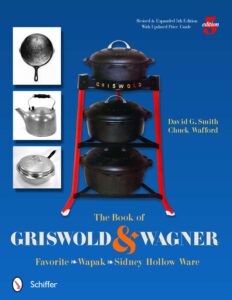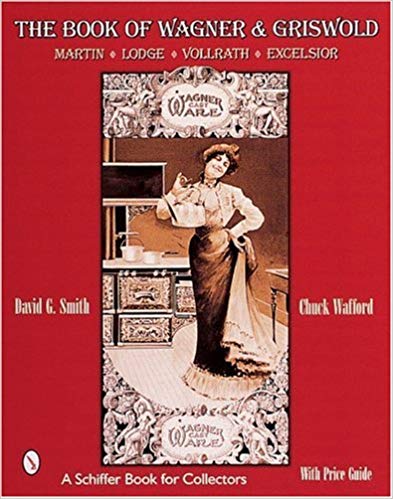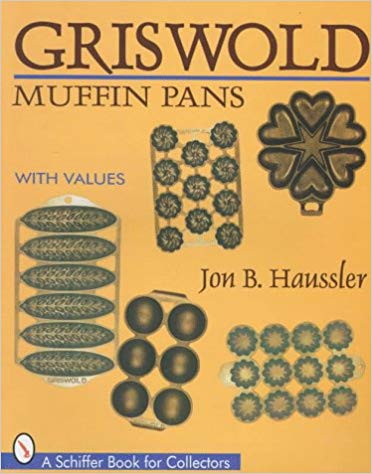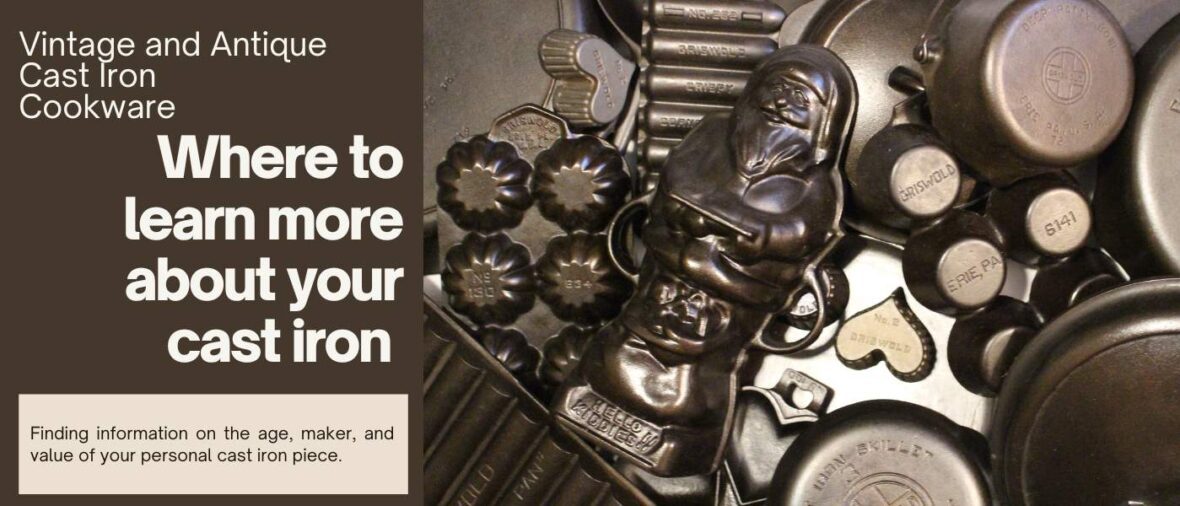If you do just a little research, you will find a wealth of information to learn more about your vintage and antique cast iron cookware.
In my estimation, doing a little research is better than just asking someone what they think. Not only will you learn something doing it yourself (and meet others in the cast iron community), you will gain a base of knowledge to help you to evaluate the responses you get from others.
You will learn that some people know the answer, some people guess, and some people simply toss out opinions. Doing some research yourself is generally a better way to get an accurate answer. Just because someone says something, doesn’t make it true.
Get the Facts!
Often, you will see photos posted on the web of a particular vintage cast iron piece – on a forum or Facebook or Reddit – and people will chime in to help identify it. This is one way for you to learn more about your piece. Trouble is, you don’t know if all of the answers are accurate. You don’t know if someone is guessing unless they say they are guessing. Follow the paper trail!
Learn from and Listen to Long-Time Collectors
There are collectors who have very significant knowledge about vintage cast iron, and they frequently “specialize” or collect in a certain area, or collect pieces by a certain manufacturer. There are forums and internet pages and groups that have very knowledgeable collectors amongst the membership, who happily share information and assistance.
You need to know that the person chiming in knows the answer to a question you have, however, as opposed to making guesses or repeating what someone else had told them (who was guessing or repeating something they had heard). Just because someone tosses out an answer on a forum does not mean that the answer is correct. Oftentimes, you will have several people chime in with different opinions. How to know who to listen to?
There are two nation-wide cast iron collecting clubs with many very knowledgeable collectors. Go to a convention or chapter meet! You’ll see so much iron and learn so much; you’ll be amazed.
The Griswold & Cast Iron Cookware Association (GCICA) is the longest-running of the two groups; it was formed in 1992. I am an active dues-paying member. Their annual conventions and chapter meets are exciting and tons of fun!
GCICA has a very active Facebook group with loads of information and photos about vintage cast iron collecting and upcoming GCICA events. They have a fun annual convention with an auction, swap meet, table talks, giant displays of rare iron, and much more. $30 annually for single membership; $40 for family. $10 for students. Join here.
The Wagner & Griswold Society – commonly called “WAGS” – is a “community of cast iron and aluminum cookware collectors.” There is a wealth of information about vintage and antique iron on the WAGS forum. Some information on the forum is available to the public. Much more – including deep dives into topics – is available only to dues-paying members.
There is a section on the WAGS forum section available to the public entitled “How much is my item worth.” There are also sections available to the public about cast iron cleaning and seasoning methods. Annual dues are $30 for an individual and $40 for two people in the same household. Join here.
Value is Completely Subjective
Value of a piece is always entirely subjective. Just because you see an identical or similar piece offered for sale on a site, do not assume that the selling price is what your piece is worth. First and foremost, just because someone is asking a particular price does not mean that is the value of the piece. If it’s still for sale, it means no one has purchased it, right?
There are many factors that go into the valuation of a vintage piece – condition, cleanliness, scarcity, precise markings, the seller, and so on. Beware of folks “guessing” at condition or rarity or what is a fair price. Often, you need to see and handle a piece to make an educated estimate of the value. And then, of course, there is “full retail” value and “wholesale” value, and all sorts of prices in between.
Many people are interested in vintage cast iron cookware and want to learn more about a piece’s value, but be if you ask about the value of a piece from 10 people, you’ll likely get 10 different opinions. Moreover, what a potential buyer says a piece is worth is, not surprisingly, often less than what a seller thinks it is worth.
More Resources
In addition to talking with collectors, you will want to get your hands on two reference books – the “Blue” and “Red” books. My suggestion is that your first purchase be the Blue book.
Reference Books
There are several books to consider if you will be on the cast iron hunt. In my opinion, two of them are a must. Both were written by David Smith and Chuck Wafford – both now deceased. While the prices in the book are outdated, the pictures and descriptions, as well as the pattern number identifications and information about reproductions – are essential for anyone looking to make knowledgeable purchases or sales of vintage or antique cast iron cookware.
Yes, if you click through the links and buy the book(s), I’ll earn a few pennies. I’d appreciate it if you did; running this site is not free.
The Blue Book

The Book of Griswold & Wagner, by Smith & Wafford. This book is commonly referred to in the cast iron community as the “Blue Book.” Rich with photographs. The main emphasis is on Griswold. Two primary sections about Griswold and Wagner cast iron pieces, and smaller sections on the manufacturers Favorite, Wapak, and Sidney Hollow Ware. If you’re primarily interested in Griswold, this book should be your first purchase.
The book also contains a “price list” for the various pieces in excellent condition. Beware of using the prices in the book as a value for your pieces, however. Not only is the book dated, but it also does not reflect current selling values. You can get an idea, however, about what pieces are higher in value (often because of scarcity) than others.
The Red Book

The Book of Wagner & Griswold, by Smith & Wafford. This book is commonly referred to in the cast iron community as the “Red Book.” Rich with photographs. The main emphasis is on Wagner. Two primary sections about Wagner and Griswold cast iron pieces, and smaller sections on the manufacturers Martin, Lodge, Vollrath and Excelsior/G.F. Filley. Has about 5% duplication from the Blue Book, but otherwise is new and different material. The book also contains a “price list” for the various pieces in excellent condition. As above, beware of using that price as a value for your pieces. The book does not reflect current selling prices.
Additional reference materials that you may consider after purchase of the Blue and Red books:
Griswold Muffin Pans

Griswold Muffin Pans, by Jon Haussler. Again, rich with photographs. Helps to identify gem and muffin pans made by Griswold, and provides a numerical value to the scarcity of the piece. Many of the Griswold gem and muffin pans were made in different variations; this book will help you to identify the particular variation and its scarcity. It can be fun to try to collect every version of a particular muffin or gem pan; this book shows photos of the different versions and how to identify them. The book also contains a “price list” for the various pieces in excellent condition. As above, beware of using that price as a value for your pieces. The book does not reflect current selling values.
Jon Haussler has also generously permitted free public access to his book via the Facebook “Vintage Cast Iron Catalogs and Literature” group. You can read it here.
Early American Cast Iron Hollow Ware
If you are primarily interested in very old American-made cast iron cookware (1645 – 1900), there is a reference book that contains many photographs and information about these antique pieces. Early American Cast Iron Hollow Ware 1645 – 1900: Pots, Kettles, Tea Kettles and Skillets, by John Tyler (2014).
300 Years of Kitchen Collectibles
When you run across a piece of old kitchenware and have no idea what it is (not necessarily cast iron), this book can be of great assistance. It was originally recommended to me by Larry O’Neil, who has a huge collection of vintage and antique cast iron cookware, amongst other things. 300 Years of Kitchen Collectibles, by Linda Franklin.
Forums
WAGS
As noted above, the WAGS forum is a great resource for collectors. Much of the information is available only to dues-paying members, though some information is available free of charge to the public.
Cast Iron Collector
There is a forum available without cost to the public at The Cast Iron Collector. In addition to the very active forum, the site contains a ton of information to help people identify, restore, and use their vintage cookware.
Reddit has a very active sub-forum on cast iron – r/castiron – which you can also check out.
Information about Griswold Reproductions and Fantasy Pieces
WAGS has a publicly-available list of some of the Griswold pieces that are known to have been reproduced, along with helpful photographs. You can find that list here.
The Blue and Red books referenced above contain information about some of the more commonly-seen reproduced pieces.
You can find information about reproduction “Griswold” pups on this site. I also wrote a post about reproduction “Griswold” skillet racks and reproduction Griswold Santas.
The Cast Iron Collector page also has a section devoted to reproductions, here.
There are many groups devoted to vintage cast iron cookware on Facebook. Check out the GCICA Facebook Page, Wagner & Griswold Facebook Page, and my Griswold Cookware Facebook Page. 1
If you are interested in learning more about a particular manufacturer, you might try searching on Facebook for that name; there are groups devoted to specific manufacturers.
Here are just a few of the many Facebook sites about vintage cast iron that are very active and educational.
- Griswold, Lodge, and Wagner Cast Iron
- Martin Stove, Favorite, and CHF Collector’s Forum
- Lodge and BSR Cast Iron Group
- Vintage Cast Iron Cookware Catalogues and Literature
- Cast Iron Cookware Identification
- How Much is My Cast Iron Worth?
- Lodge Commemorative and Advertising Cast Iron
- Lodge Cast Iron Lovers
If you take a few moments to type your query into google, you will get a plethora of results. Do some research!
If you do a google search for the markings on your piece (i.e. pattern numbers, name, other letters or numbers) and then look at “images” you may find all the information you need about your pan just in a few clicks!
You can also do a “reverse image” search, where you upload a photo of your pan and then let google search the web for similar images for you. This is a great and quick way to find all kinds of information!
- I also post a lot of vintage cast iron ephemera on my Instagram page.

